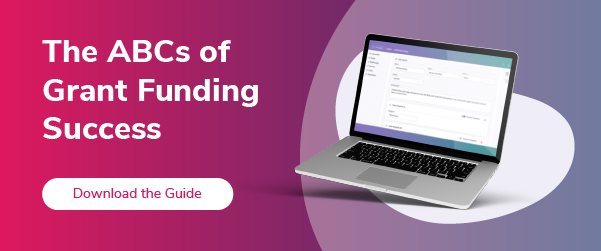In the previous post, we touched on how capacity-building grants are identified and developed in an effort to better position organizations for growth. Now, we’ll review the power of capacity-building grants and the impact they can have on an organization’s development.
There are three main types of capacity-building efforts:
- People-Power Building: the implementation of training and development programming which strengthens the knowledge and skill of an organization’s staff and the recruitment of people (volunteers, staff, and board members) that can further an organization’s capacity.
- Organizational & Structural: the approach of blending supporting the overall organization’s communication and inter-departmental collaboration with systems and best-practice procedures.
- Equipment & Materials: gaining the tools, and physical resources necessary (anywhere from databases to smart devices) to ensure the efficacy of the organizations’ programming and services.
To better illustrate how capacity-building grants can support an organization’s strengthening and scale, let’s look at two example organizations whose capacity-building process touches on core aspects of the three main categories of capacity-building.
ABC Youth Network
ABC Youth Network is a west-coast based nonprofit that formed in 2003. For the past 5 years, they maintained an average annual budget of $3 million, relying heavily on board-driven individual contributions–with less than 10% of the budget coming from institutional funds. Community-focused, it has historically had an active board representative of its focus population. However, the board, the majority of whom have been with the organization for over 15 years, are transitioning out due to retirement, relocation, etc. Additionally, senior leadership has decided to launch a new program, which will require increased funds (30% over their budget), far beyond the current individual donor-driven network they maintain.
Senior Leadership knows something has to change. They begin with an analysis of their current assets and the highest needs. Individual fundraising has always worked for them, but they need to grow and scale—they apply to several foundations outlining their need for a fundraising specialist who can develop their institutional giving program and support their board development.
ABC Youth Network is awarded two grants—one takes the form of a $300,000 two-year grant restricted to their development needs. With these funds, they are able to hire a Development Director and Grant Writer, who are able to secure additional funds in an effort to launch the expansion project from other institutional donors. The second capacity-grant they were awarded is an in-kind grant, which provides the nonprofit with a consultant, free of charge, who builds a board-member recruitment and retention program. This board advancement opportunity acts with dual purpose, raising the organization’s profile, and generating a new, stronger network, for the organization to leverage for additional resources. In less than 9 months, they have grown their budget over 35% through institutional support alone.
Overall, these capacity-building grants catalyzed ABC Youth Network’s ability to diversify its funding streams, scale its organization’s programming, and build a pathway to sustainable funding.
Veterans Today Org
Veterans Today Org started in 2015 in the founders’ home. They used whatever resources available (from borrowed clipboards to found pens)—operating with a barebones budget and scarce materials. As they grew out of the home and into an office, and eventually into a multi-suite space to support the scale of supportive programming, they continued to use the same paper filing, excel sheets, and materials. Despite growing from a budget of $100,000 to over 1 million, Veterans Today Org was not prioritizing their data collection and evaluation methods. Client tracking was done with historical data often secured through informal conversations, and there was no comprehensive system for tracking the progress the clients and the organization was making.
Leadership began to realize they were at a critical point for growth—Veterans Today Org’s programming had scaled exponentially, however, the organizational structure and tools had not grown at the same rate. They needed an effective, and custom database, training for staff on best practices, and funding to make this happen. Looking to institutions in their network, they asked program officers for references to capacity-building opportunities. They were able to secure a one-time $250,000 grant to help secure a database and train the staff on updated standards and best practices.
Within 6 months of training the staff and implementing the database, they saw not only a dramatic growth in their client’s measurable success but realized new indicators and touchpoints necessary to evaluate in order to better support their population. Less than 18 months after that, their evidence-based approach was gaining traction, and they were awarded a six-figure government contract due to their proven, and trackable, methods for success. The $250,000 capacity-building grant, positioned Veterans Today Org as a recognized and key leader in their community. Further, the investment in their equipment and materials, as well as their organizational structures, created a path to sustainable funds more than double their operating income in less than two years.
Capacity-building looks different for every organization, as the framework for nonprofits varies based on your field of interest as well as the structure and scope of your work. What remains consistent across all non-profits, is that capacity-building is about improving your organization’s effectiveness, strengthening your impact, and ensuring that you have the systems, tools, and people in place to secure your long-term sustainability. In the next post, we’ll review the need for effective reporting, and why consistent updates to funders support your organization’s growth.

-1024x512.png)


